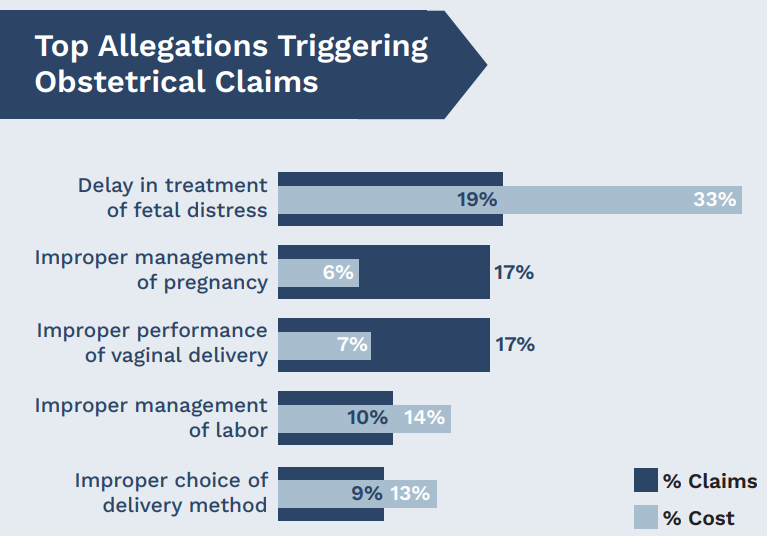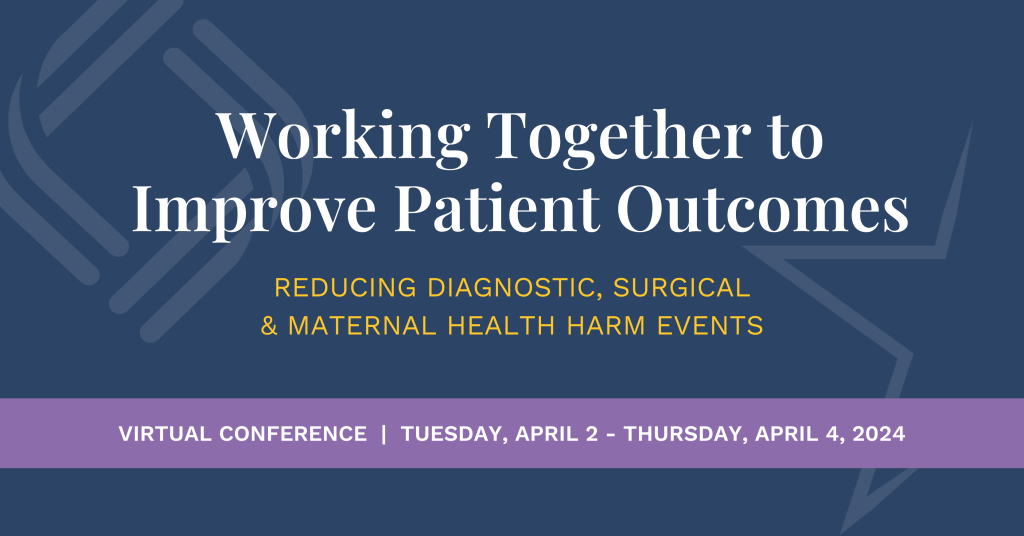What We Learn From Malpractice Claims: The Top Drivers of Risk and Harm
What we learn from malpractice claims: the top drivers of harm
In an analysis of our malpractice claims, we have identified the most significant drivers of risk, harm, and loss for healthcare organizations. The top drivers of patient harm in terms of frequency and severity of claims across all care settings involve:
- Surgical treatment
- Diagnostic errors
- Obstetrical treatment

Fortunately, many of the contributing factors identified within these drivers are amenable to changes that can reduce risk and mitigate harm. Paying attention to risk management—especially in these areas—can make a difference for your organization on multiple levels.
At Curi, we strongly believe that improved patient safety and risk mitigation can make a meaningful difference in the wellbeing of your clinicians and care teams and your organization’s bottom line. To learn more about the top drivers of harm and find risk strategies, read our Commons Factors issue, What Drives Risk in Healthcare. Our upcoming conference with Iowa Healthcare Collaborative, Working Together to Improve Patient Outcomes, will provide your care teams and organization with even more resources and strategies to mitigate the risk of these top drivers.
Surgical treatment
Surgical treatment allegations are number one in both frequency and cost. Almost half of surgical treatment allegations (46%) involve musculoskeletal or digestive procedures.
Surgical performance allegations account for just over half (54.6%) of all claims and 53.9% of costs. These claims arise out of care provided in the operating room. Surgical patient management issues are alleged in about one-third (33.4%) of claims and result in disproportionately high costs (41%). These claims arise out of the steps taken pre-, intra-, and postoperatively.

The top contributing factors involved in surgical claims include:
- Technical skill issues, including known risks of a procedure and retained surgical items
- Clinical judgment issues, including patient assessment and selection of the procedure
- Communication breakdowns among the team and with the patient
- Patient behavior issues, including noncompliance and seeking other care due to dissatisfaction
- Documentation issues
Diagnostic errors
Diagnostic errors are number two in costs and number three in frequency across all care settings. However, the majority (58%) of diagnostic error claims occur in an ambulatory setting. Diagnostic error claims are the most expensive claims for clinics, contributing to 34% of costs. This is largely due to the severity of harm caused by missed or delayed diagnosis.

Cancer is the number one misdiagnosed condition in the ambulatory setting, and when a diagnosis of cancer is missed, the contributing factors involved include a delay or failure to order a diagnostic test (49%), failure to assess and appropriately evaluate patient symptoms (43%), and failure to establish a differential diagnosis (42%). Each claim can—and usually does—have several risk factors contributing to the missed diagnosis.
Obstetrical treatment
While obstetrical (OB) treatment claims are less frequent (only 4% of claims), the average cost of these claims is disproportionately high—driving this category to have the third highest costs of all allegations. Pregnancy can be a risky business—for women, their babies, and the healthcare organizations that care for them. According to the CDC, roughly 700 women die in the U.S. each year because of pregnancy or delivery complications, but they estimate that 50% of these deaths are preventable. Sadly, 66% of OB claims result in permanent injury or death.
Most of the OB allegations are made against obstetricians, but secondary responsible clinicians, such as nurses or family medicine clinicians, may also be involved. Our data shows that 45% of OB claims involved a secondary responsible clinician, and almost half of those claims involved nursing and an alleged delay in recognition and treatment of fetal distress. This highlights a gap in fetal monitoring and team communication skills that can prove devastating for mothers and babies.

How to mitigate harm involved in the top drivers of claims
Curi and Iowa Healthcare Collaborative are coming together to offer a virtual conference highlighting the impact that harm events from the top drivers of malpractice claims—diagnostic error, surgical treatment, and obstetrical treatment—have for physicians, healthcare providers, organizations, and patients. Attendees will gain valuable insights to understand why these malpractice allegations occur, identify opportunities for improvement, and recognize how early intervention provides a better way forward for all involved after harm. There is no fee to register for this conference, and continuing medical education credits will be available. Register here.
This virtual conference will take place over three half-days on April 2, 3, and 4, 2024. Attendees will:
- Identify actionable opportunities to improve patient safety and risk mitigation
- Be inspired and learn from nationally renowned speakers who know the challenges that care teams face every day
- Gain valuable insights to understand why diagnostic, surgical, and maternal health malpractice allegations occur
- Learn how early intervention provides a better way forward after harm
There is no fee to register for this conference, and continuing education credits will be available.
Risk reports
Our risk reports analyze malpractice claim data on a wide range of topics and specialties and share insights clinicians, care teams, clinics, hospitals, and senior living organizations can use to help reduce harm events and malpractice claims. Are you a client? Sign in to MyAccount to access exclusive client versions of our risk reports. The expanded reports share actionable insights and strategies that you can utilize to help reduce harm events and malpractice claims. After you sign in, follow Risk Resources > Tools & Resources > Publications > Risk Reports. You also have access to a host of Bundled Solutions (in Risk Resources) that cover a wide variety of topics—such as Preventing Diagnostic Error—to assist you in your risk mitigation efforts.
Curi’s risk mitigation resources and guidance are offered for educational and informational purposes only. This information is not medical or legal advice, does not replace independent professional judgment, does not constitute an endorsement of any kind, should not be deemed authoritative, and does not establish a standard of care in clinical settings or in courts of law. If you need legal advice, you should consult your independent/corporate counsel. We have found that using risk mitigation efforts can reduce malpractice risk; however, we do not make any guarantees that following these risk recommendations will prevent a complaint, claim, or suit from occurring, or mitigate the outcome(s) associated with any of them.
Share this blog article:
Latest Blog Articles
Five Steps Organizations Can Take to Reduce the Top Drivers of Patient Harm
Our national conference on reducing diagnostic, surgical, and maternal harm offered insights into the top drivers of harm. Learn how to reduce risk.
Five Steps to Reduce Generative AI Risks in Healthcare
AI is already assisting physicians and healthcare organizations in many ways. Learn how its use may impact liability and what strategies can mitigate risk.
Five Steps to Reduce Obstetrical Errors and Malpractice Claims
Learn how to reduce obstetrical harm using evidence-based protocols for managing high-risk situations, joint team fetal monitoring education, and enhanced teamwork.



